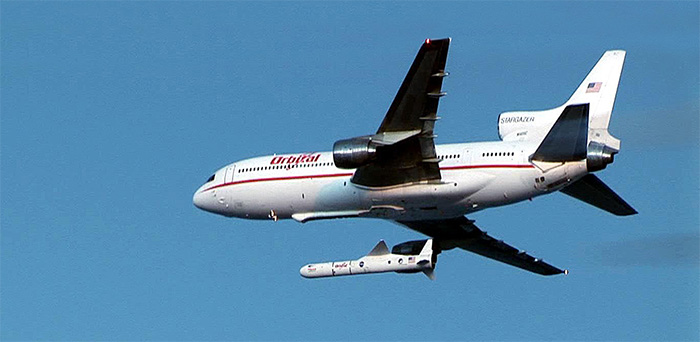An Orbital Sciences Pegasus XL rocket is scheduled to launch the NuSTAR observatory, part of NASA’s Small Explorer satellite program, on June 13.
NuSTAR, which stands for Nuclear Spectroscopic Telescope Array, is notable because it will be the first high-energy X-ray satellite with true focusing optics, which will provide better sensitivity than previous instruments.
The launch is notable for Orbital Sciences because the air-launched Pegasus hasn’t been getting much business lately. In fact, the last Pegasus launch was back in 2008.
Unfortunately, the press release from JPL perpetuates some mistaken ideas about launch costs.
The press release asks, “Why launch from the air?” It then goes on to explain, “Plane-assisted launches are less expensive than those that take place from the ground. Less fuel is needed to boost cargo away from the pull of Earth’s gravity.”
There’s some truth in that. Air launch does reduce the energy (hence, propellant) required to reach orbit. Propellant costs have very little effect on launch costs at the present time, however.
Fuel costs are important for mature transportation systems (aircraft, ships, and ground vehicles), where fuel costs account for about one-third of total operating costs. (The other two-thirds are capital costs and labor/maintenance.) Unfortunately, space transportation is not a mature industry. As a result, propellant costs account for an insignificant fraction (typically, less than 1%) of overall launch costs. Propellant won’t become a significant cost factor until expendable rockets are replaced by fully reusable launch systems.
Moreover, if propellant costs were a significant concern, Pegasus would be a poor choice because it uses solid-fuel motors. (Solid rocket propellant is several times more expensive than any common liquid-propellant combination.)
Air launch has many advantages and is a promising technique, but Pegasus has never been cheap enough to please small satellite customers and, given the extremely low flight rate, Orbital Sciences must be losing its shirt on Pegasus launches right now.
In fact, the high cost of Pegasus launches has been part of the inspiration for initiatives such as DARPA’s Airborne Launch Assist Space Access project and NASA’s Nanosatellite Challenge, both of which seek to develop cheaper forms of air launch.


Leave a Reply